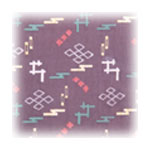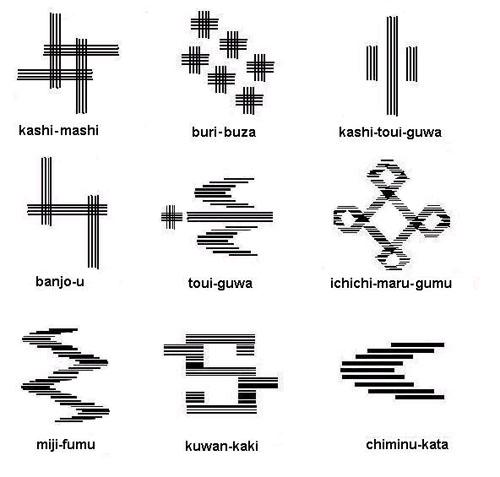Miezu

"Miezu" is design patterns created for weaving Kimono for the royal family, aristocrats and shizoku (warrior) classes during the Ryukyu Dynasty, A book of 50 "Miezu" made by the Ryukyu government designers is called "Miezu-cho".
Miezu is written in actual size and painted in the exact colors of the completed goods. The length, width and number of threads used were also strictly fixed and stipulated in the order form. The marking of Kasuri parts, with ink according to the pattern in Miezu, ensured the perfect making of Kasuri patterns.

The system of tax payment by offering woven fabrics lasted for approximately 300 years from the invasion of Ryukyu by Satsuma in 1609 until 1903. The Ryukyu government made the women of mainland Okinawa, Kumejima, Miyako and Yaeyama areas weave fabrics based on the order form and Miezu-cho. The women who were obliged to offer their weavings took great pains to complete the work when a difficult design was ordered. In the case of Kumejima Tsumugi, which is famous nowadays for its exquisite and noble beauty, the advanced techniques were developed to a flawless perfection by observing "Miezu-cho" strictly when their order for the royal family was woven.
There are many Miezu with the same patterns but different background colors. The Miezu with its background painted in black means the dyeing should be done in very dark indigo which looks almost like black. There are Miezu for ordering Kasuri Kimono with white background made from Choma ramie or cotton. The former is for ordering Miyako-jofu, and the latter for ordering Yaeyama-jofu. Several copies of Miezu-cho and about 200 Miezu are still in the possession of the Sho family, the descendants of the Ryukyu royal family and the Okinawa Prefectural Museum.
